“It finally dawned on me why sales feels like a relentless grind of endless dialing every single minute…”
“Any tips to boost my productivity? I’m tired of wasting time on voicemails and dead-end calls.”
We don’t want to spend our days endlessly pressing phone buttons or facing the frustration of unanswered calls. Beyond venting our work frustrations online, what solutions can we find to help us?
We are in urgent need of an Auto Dialer.
What is Auto Dialer?
Auto Dialer is an automated tool that dials a list of people based on predefined rules and helps us connect with customers effectively. It functions as an “intelligent call assistant,” dialing numerous numbers and filters out failed calls and, upon connecting, either transfers the call to agents or plays a recording.
How does it work?
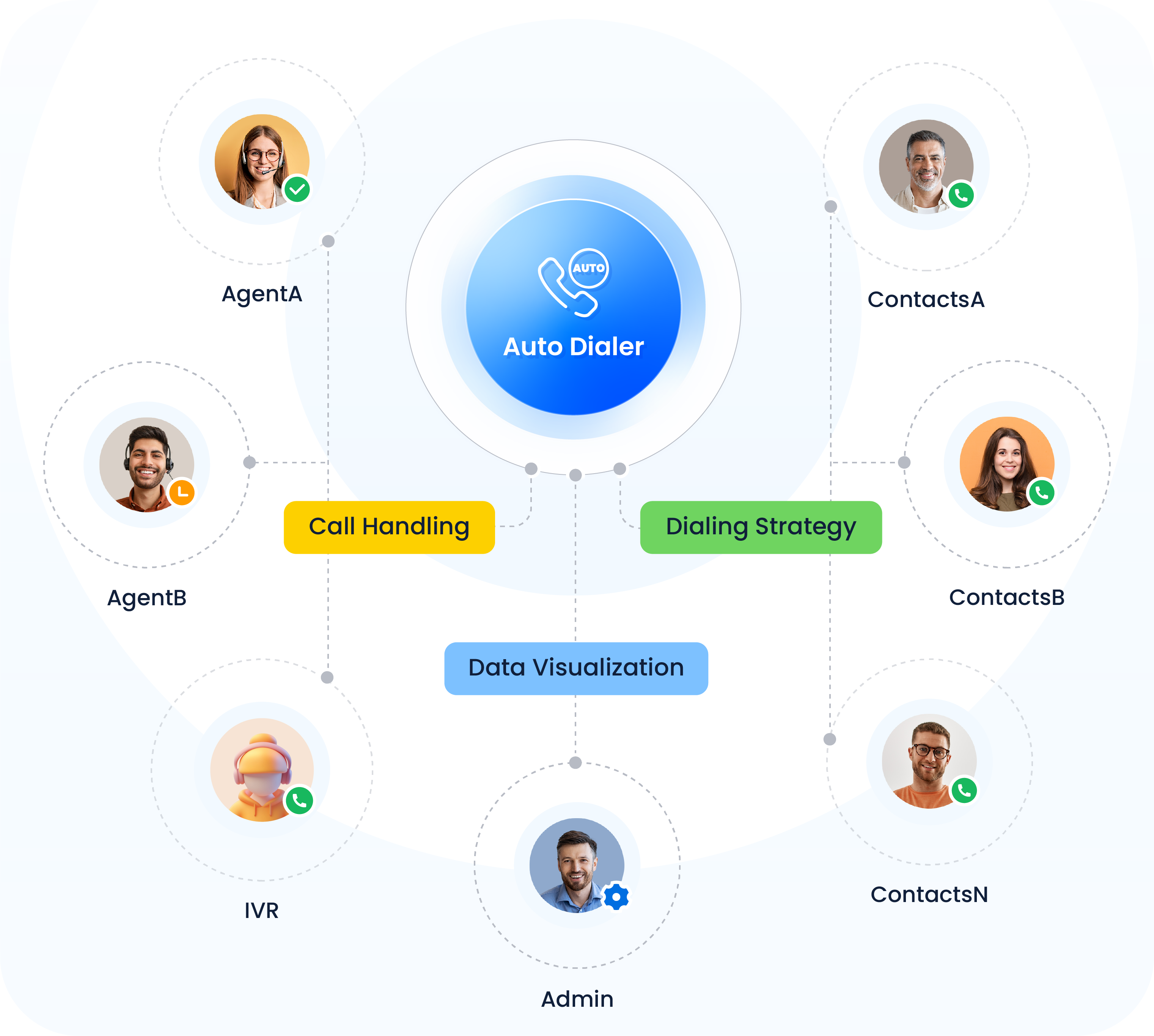
An Auto Dialer encompasses several key components:
Dialing Engine: responsible for making calls automatically and managing dialing logic.
Self-service IVR: provides voice menus and interaction capabilities.
Agent Interface: offers an interface for manual agent operations.
CRM Integration: synchronizes with CRM systems to update customer information and call records.
Database: stores call lists, call logs, and other related data.
Through these core components, the Auto Dialer can execute the following workflow:
Identify Dialing Strategy: identify a pre-configured dialing strategy, such as the Auto Dialer modes.
Automated Dialing: initiates dialing, filters out unconnected calls, and assigns connected ones to available agents.
Call Handling: agents communicate with customers, and make the relevant notes; Alternatively, IVR plays voice messages to gather responses.
Data Analysis: reports are generated to display dialing performance metrics, such as connection rates and abandon rates.
Auto Dialer Modes for Different Scenarios
The Auto Dialer seems proficient in the dialing process. However, in scenarios where we need to collect customer feedback quickly, or in instances that require 1-on-1 customer service, we require the dialer calls under different calence. We can configure our dialer in various dialing modes for these scenarios.
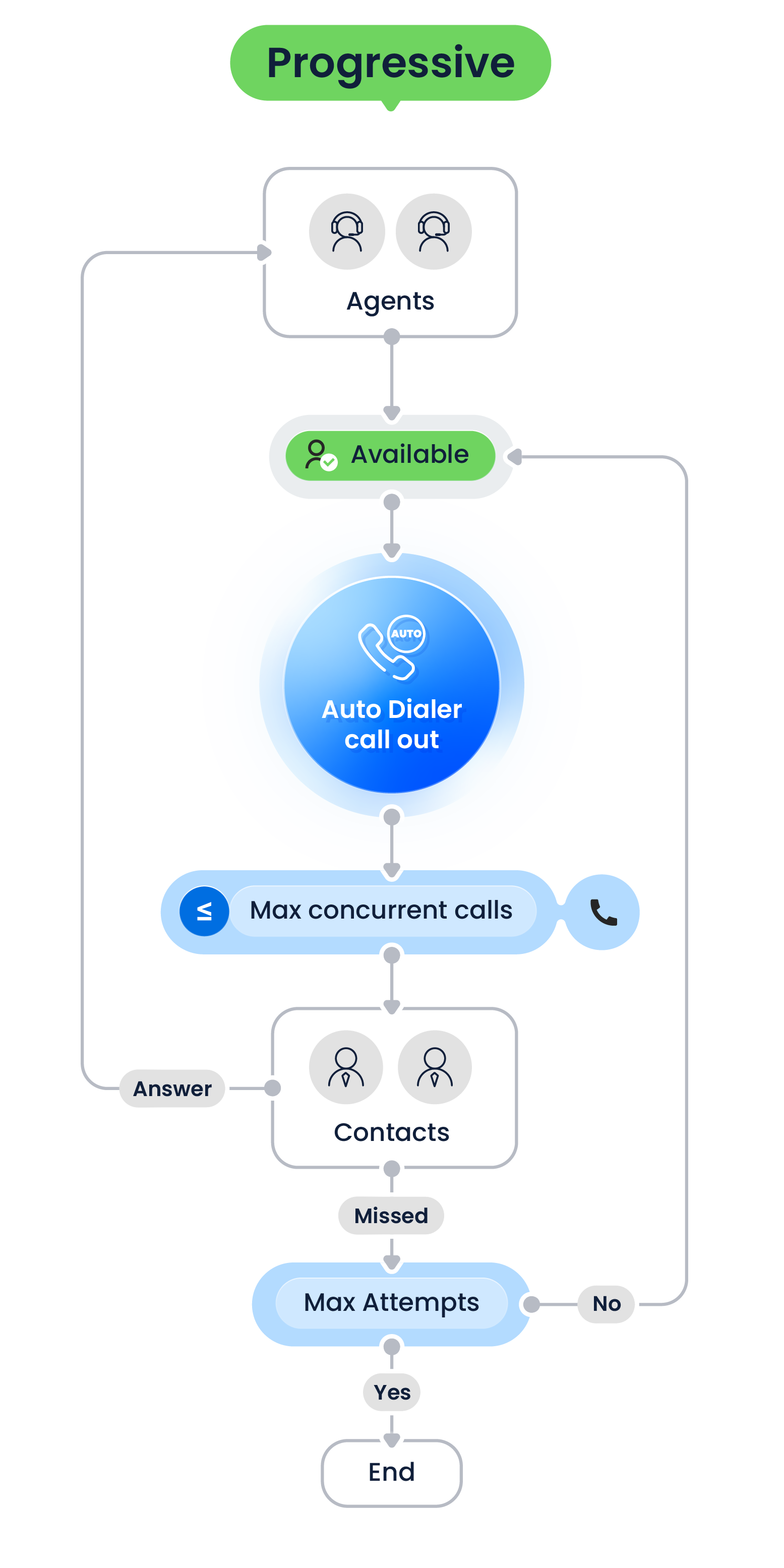
Mode 1: Progressive Dialer
Description:
Automatically dial one contact for each available agent.
This guarantees that an agent is promptly ready to engage with the customer.
For example:
You have created this task in the campaign panel with a maximum call concurrency of 5. Right now 3 agents are available. Therefore, the system will make 3 calls simultaneously.
Usage scenario:
Recommended for scenarios where it is essential to ensure timely responses and follow-ups. For example, high-value customer sales, targeted customer callbacks, major client services, and technical support responses.
Benefits:
Ensure that every connected call is answered, increasing the rate of business connections.
Drawbacks:
If there are a high number of missed calls, agents may experience longer idle periods.
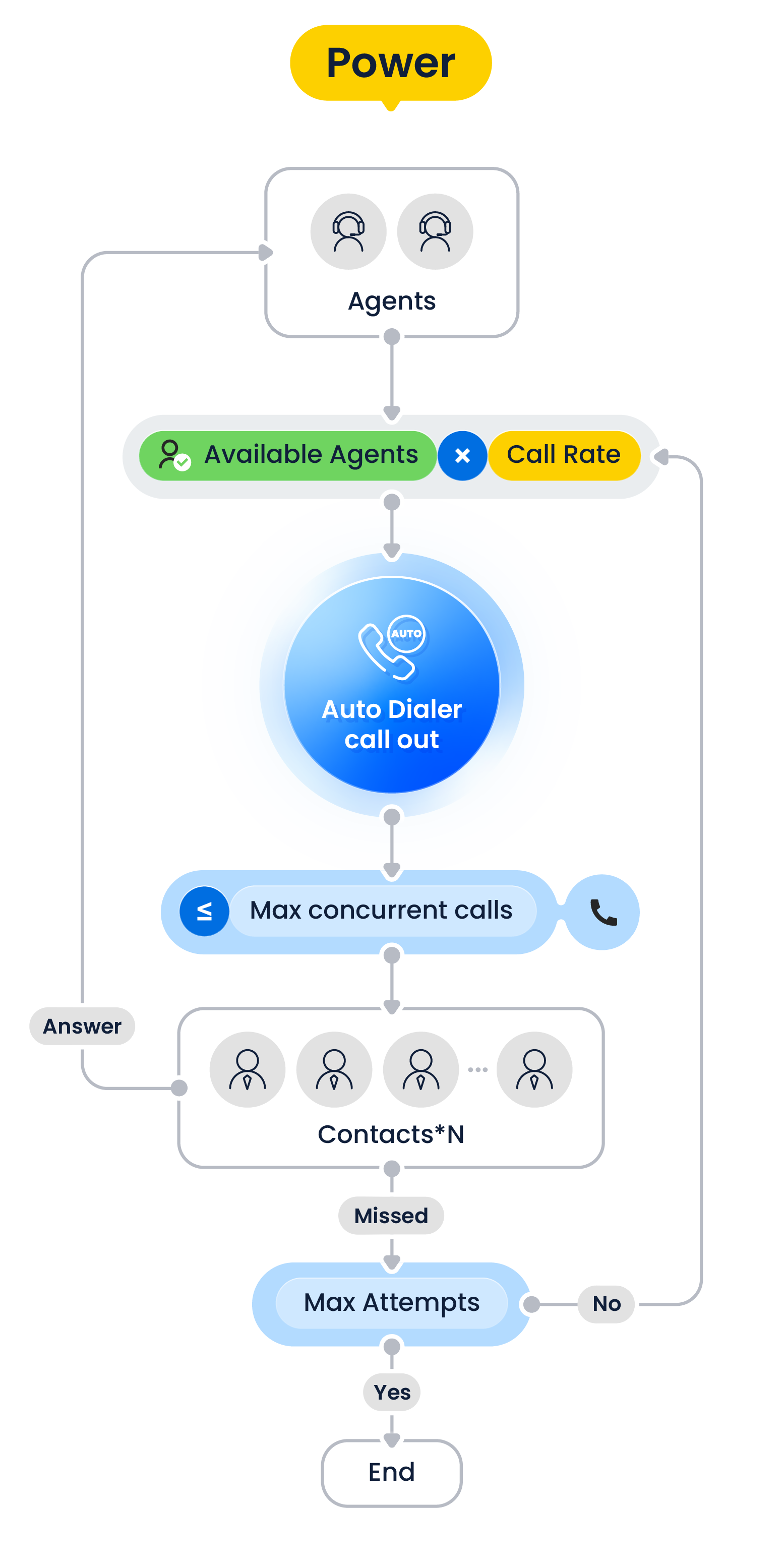
Mode 2: Power Dialer
Description:
Automatically dial multiple calls for available agents based on the dialing ratio.
This mode simultaneously dials multiple numbers for each available agent at a predetermined dial rate.
For example:
You have created a task in the campaign panel with a call rate of 5 times. Right now 15 agents are available, the dialer will automatically place 75 calls (15*5) simultaneously. If 10 of those calls are answered, the dialer will then process additional 25 calls ((15-10)*5).
Usage scenario:
Typically utilized in scenarios that require rapid call placement and maximization of call efficiency, such as telemarketing, market surveys, and event promotions.
Benefits:
It enables high-frequency, multi-line outbound calls.
Drawbacks:
A shortage of agents may lead to customers experiencing delays.
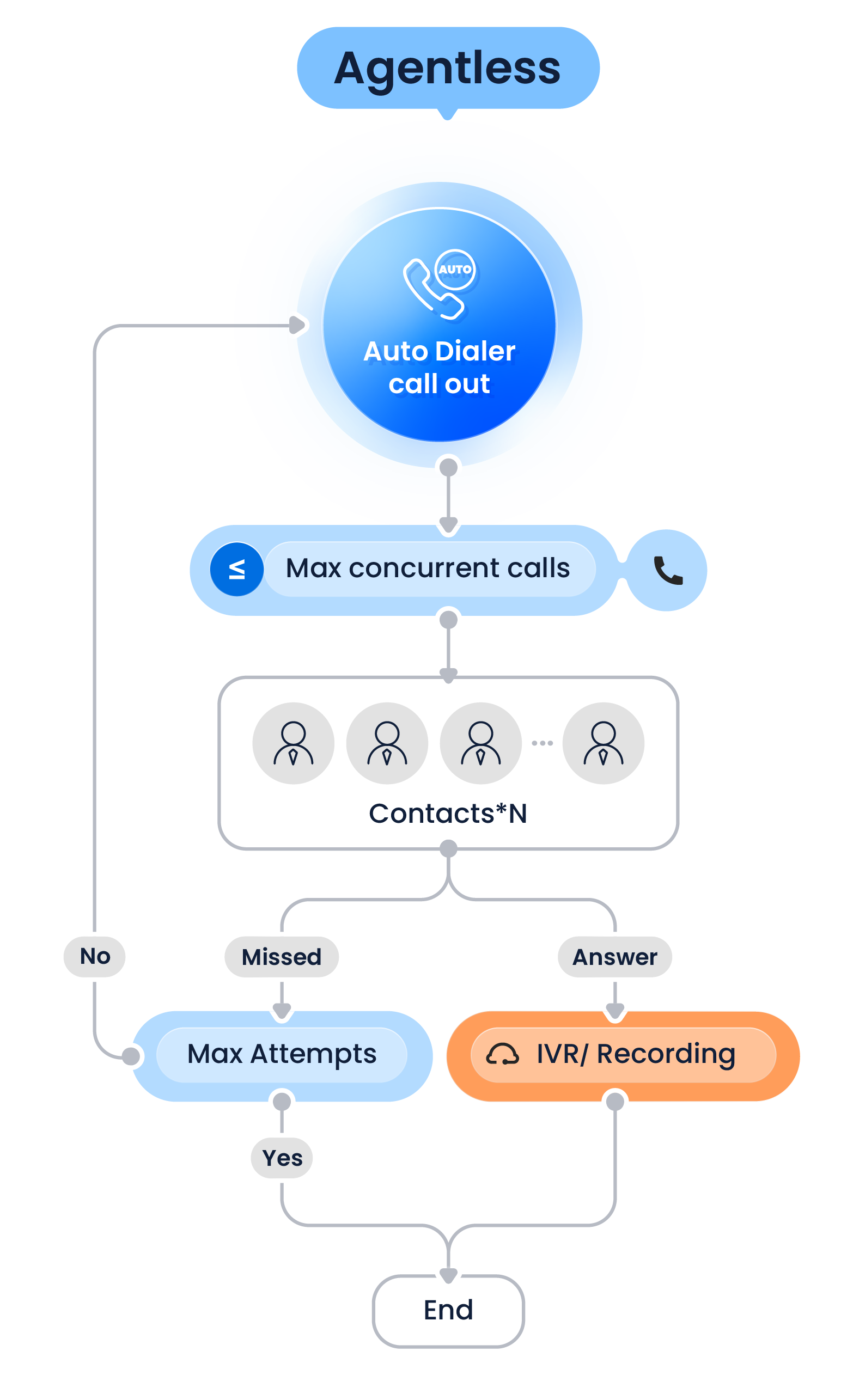
Mode 3: Agentless Dialer
Description:
Transfer the connected contacts to the designated destination.
This mode automatically dials numbers and connects the contacts to an IVR system or plays a recording, eliminating the need for agent interaction.
For example:
You have created a task in the campaign panel with voice recording. The system will automatically dial the contacts and play the recordings when it is connected.
Usage scenario:
Primarily in the scenarios where human interaction is not mandatory, such as bulk notifications and message synchronization.
Benefits:
It can reduce the investment in agents.
Drawbacks:
The absence of human interaction may result in lower connection rates.
Special Note
1. All outbound modes are influenced by the maximum concurrent calls.
2. Additionally, if the ‘Ring in Use’ feature is enabled in the system, all non-idle agents will be considered available, and the auto dialer will place calls on their behalf. This feature can be enabled in scenarios with a particularly high call volume.
More FAQ You Concern
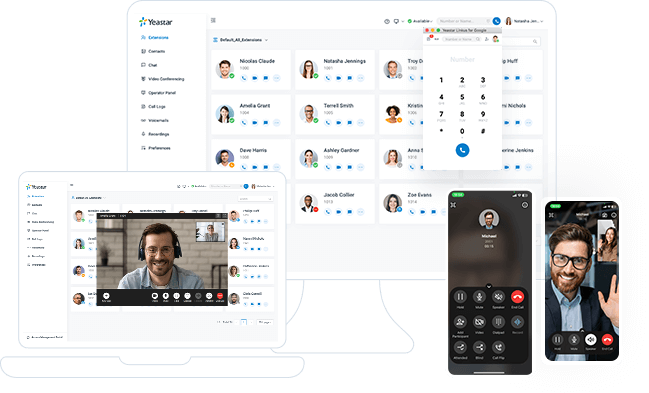
Effective Outbound Call Center
Yeastar Outbound Call Center integrates dialing automation, unified agent workplace, progressive campaigns, and visualizable data together, facilitating streamlined and efficient calling processes while generating increased revenue opportunities for the company.
Get started with 30-day free trial
Create your Yeastar phone system in minutes & see what all-in-one communications can do for your business today.
X
